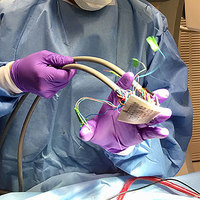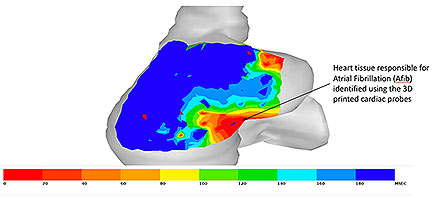3D-Printed Heart Mapping Sensors Detect Aberrant Activity
 Sep-02-18
Customized, 3D-printed heart mapping sensors could offer a more efficient way to treat atrial fibrillation.
Sep-02-18
Customized, 3D-printed heart mapping sensors could offer a more efficient way to treat atrial fibrillation.Currently, cardiologists use mapping catheters to detect the aberrant electrical signals in the heart tissue, but since these devices only come in one size, the effectiveness is limited. To offer a better way to study to heart’s rhythm disturbances, a team from Stanford University created customized 3D-printed shapes made of a silicon membrane with a grid of tiny electrodes. The shapes can be placed on the surface of the heart’s atrium, where the electrical activity is tracked and transmitted to a paired computer. That information is then used to create a heat map of the areas of the heart that need treatment.

More Info about this Invention:
[MEDGADGET.COM][NEWS.STANFORD.EDU]

Add Your Comment